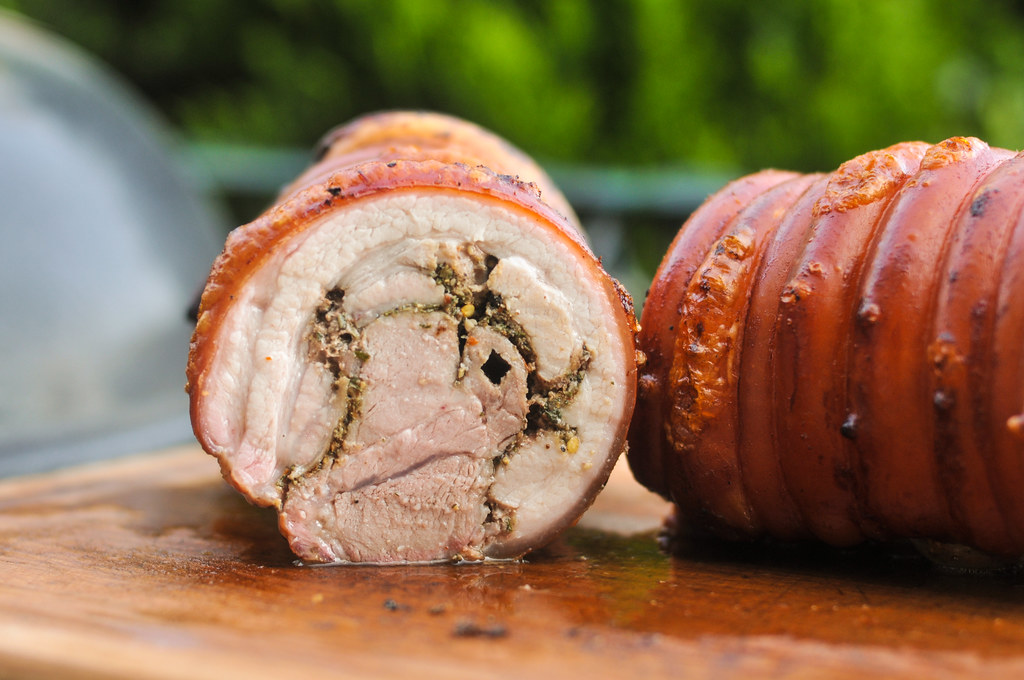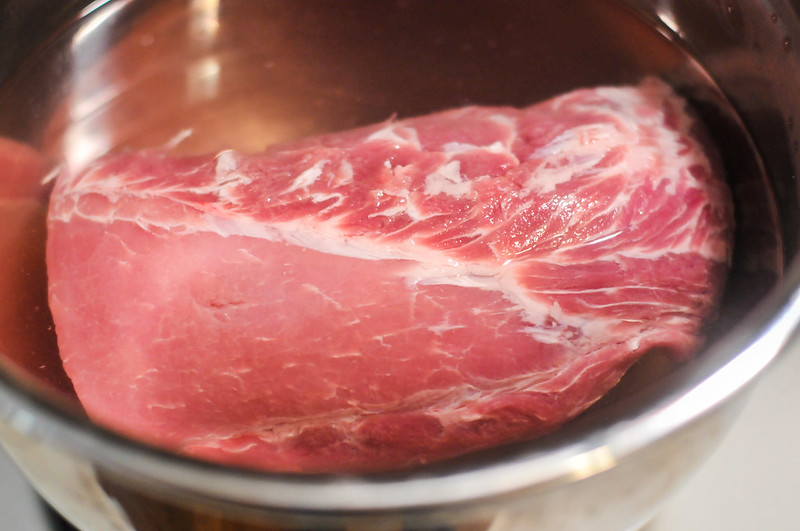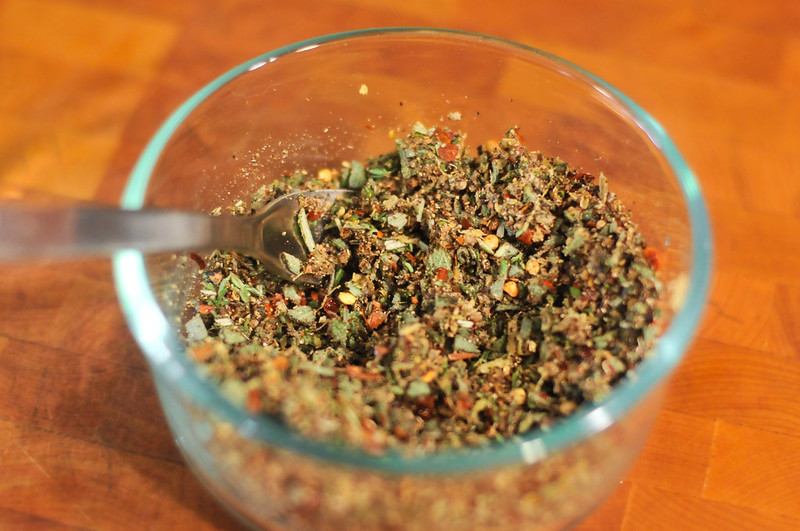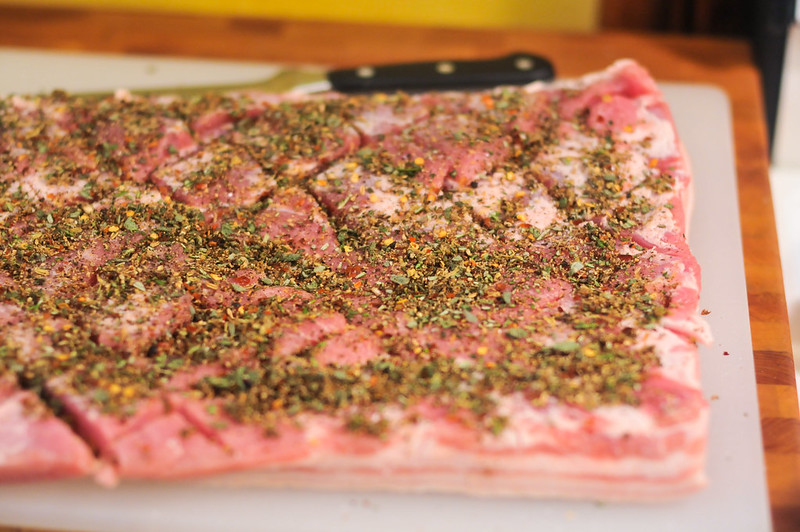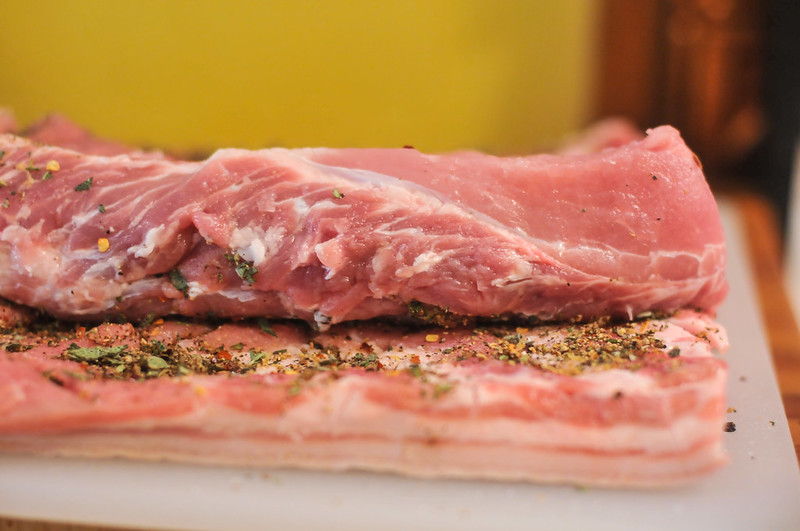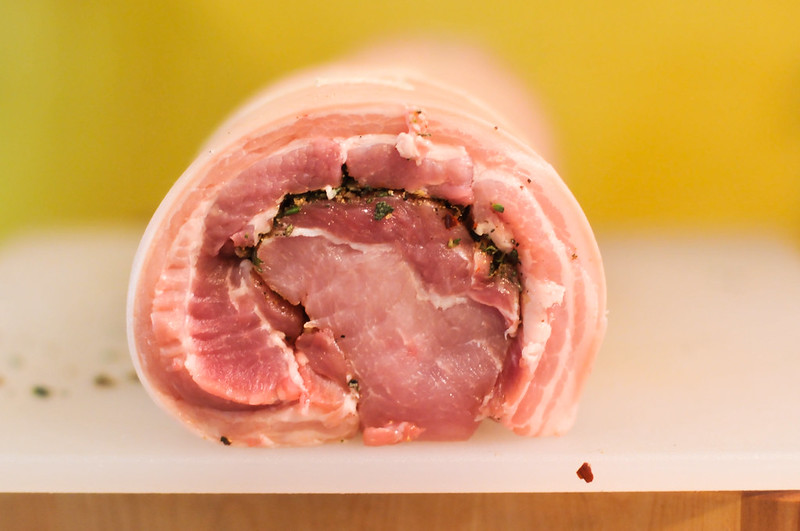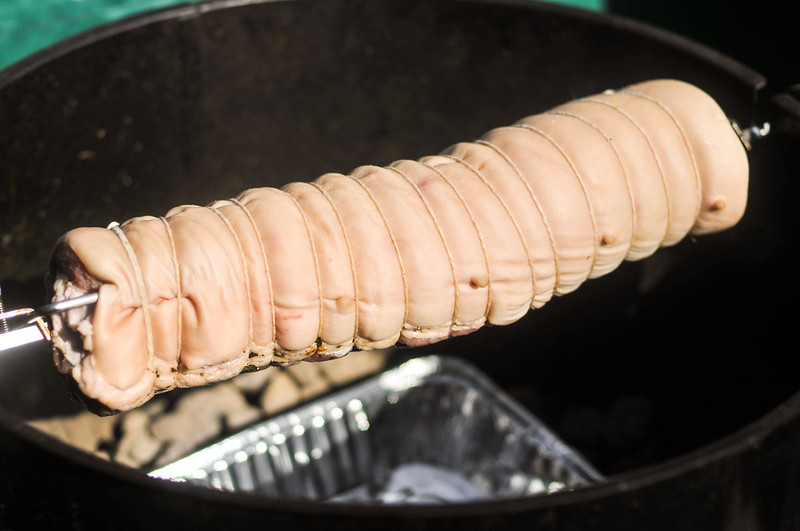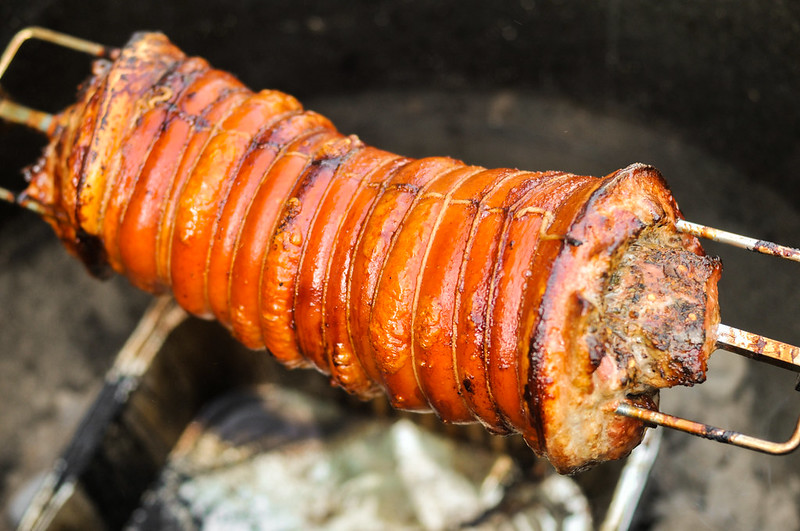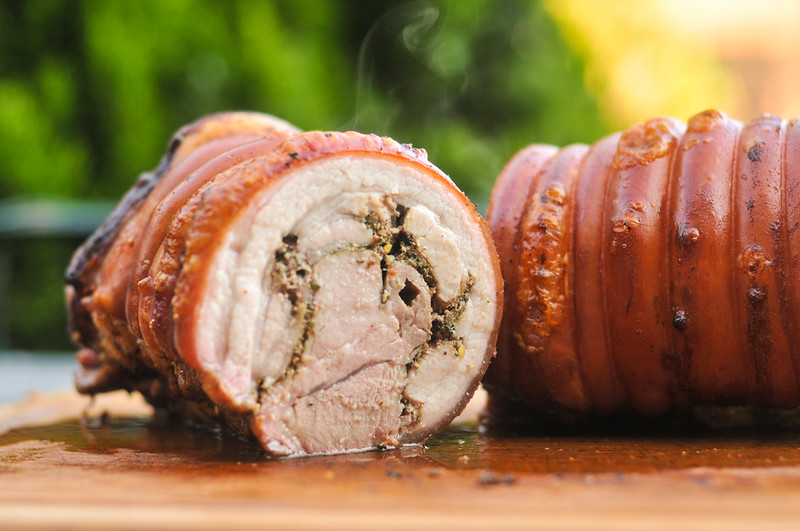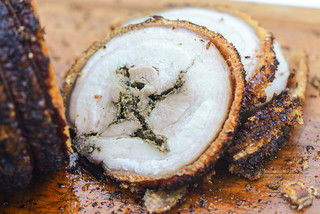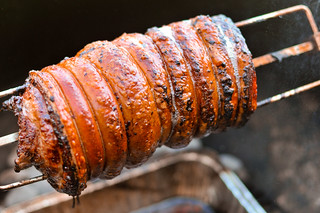Rotisserie Porchetta
Ever since finding the gospel of rotisserie pork belly, I've had an itch to do it again. With Christmas coming up, it seemed like this crisped skinned and juicy chunk of pork would make one fine, rich centerpiece for the holiday table. So I took up the task of trying out another variation of slowly spinning belly over a live fire, this time around going the Italian route with a rotisserie porchetta that proved again that this is one of the greatest ways to cook pork belly.
Porchetta is traditionally the deboned belly of the pig, with the loin still attached, which is heavily seasoned, rolled, rested, and then roasted. While the loin would usually be a pretty dry cut thanks to its lack of fat, the idea behind porchetta is that the combo of a heavy dose of salt and rendering fat from the belly will keep that loin moist. The problem is that even with those safeguards, if you take the loin north of medium doneness, it'll still start drying out. To combat this, I started my pork loin off in a brine by itself to inject some extra moisture insurance into it.
While the loin brined, I turned my sights to the porchetta seasoning. Sticking with a traditional recipe, I comprised my rub of the common seasonings that include a hefty portion of black pepper, fennel, and sage along with rosemary, garlic, thyme, red pepper, and lemon zest. It's a wonderfully aromatic and potent mixture that has the power to deliver a lot of flavor to these large cuts of meats.
The next step was laying out the belly and cutting deep slits at about one inch intervals in a diamond pattern. The belly was then seasoned heavily with salt and spread with the rub liberally, making sure the herb and spice mixture found its way in the those crevasses to provide an even deeper seasoning.
I then laid the loin in the center of the belly and attempted the roll. Unfortunately the loin was a bit too big to be effectively enclosed in the belly, so I had to cut the thing in half to make it the proper size. I was thinking this may make the tenderloin the better fit for the job in terms of size and shape, but I wasn't going to start over, so the reduced loin had to do.
I was then able to rolls the belly shut, tying it off with butcher twine at one inch intervals. What I had before me a gigantic roast that was already a beauty, but I could only image how much better it would look after a few hours of slow cooking.
The whole porchetta was put on the spit—this thing was so big that it took up nearly the entire 22 1/2-inch space I had in the grill. It went over a medium fire that had two equal piles of coal on either side of the charcoal grate, with a drip pan in the middle to catch the rendering fat.
The beast slowly spun until the skin browned and crisped in its own fat, and the loin reached just north of 150 degrees—mine was 155 in the loin when it was ready to be pulled. This process took just about three hours, which meant it required a refueling with hot coals about half way through when the first batch started to die out.
Once off the grill and rested, I made the first slice. The audible crack of the skin followed by sight of that juicy meat had my mouth salivating. You probably don't need me to tell you how delicious this was. How can you go wrong with pork wrapped in fatty pork with crunchy skin? The impressiveness of this monster roast makes it perfect for the holiday table, but it's so good that'll you'll want to eat it all year.
You Might Also Like
Comments
-
Chris Must
find
pork
belly..... -
Steve I doubt this will take 3 hours to cook. I routinely roast 15-18 pound turkeys on my Weber rotisserie setup in 2 hours. I am planning to try this out in 3 weeks for a dinner party, I'll remember to report back!
